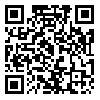BibTeX | RIS | EndNote | Medlars | ProCite | Reference Manager | RefWorks
Send citation to:
URL: http://jgn.medilam.ac.ir/article-1-105-en.html
Introduction and purpose: Aging population is a new phenomenon in Iran which is due to several reasons such as decrease in birth rate, increase in medical advances, health, education and prolonged life expectancy. The current study aim to investigate economic and social aspects of elderly population such as median age of population, dependency ratio, sex ratio, marital status, litearcy and employment in Ilam province.
Materials and Methods: We used secondary data from population and housing censuses of Ilam province between 1976 to 2011 and also the population data form the United Nations.
Findings: According to the census data, population aged more than 65 years old increased from 4.03 % in 1986 to 4.71 % in 2011. The population of elderly in rural areas was higher than urban areas. Data from 2006 census showed that aging index in Ilam was less than 10. The sex ratio in population older than 65 years old was similar to the whole population and was higher than 100. In all the censuses, number of widows was more than widowers. The literacy rate of elderly increased from 8% in 1986 to 13% in 2011.
Conclusion: From the structural point of view, the population of Ilam is in the midlife stage (toward aging). In the current situation, high dynamic population has created a favorable age structure and an ideal opportunity for improvement of the development which is known as the demographic opportunity window among the demographers.
Received: 2015/02/7 | Accepted: 2015/05/18 | Published: 2015/07/1
| Rights and permissions | |
 | This work is licensed under a Creative Commons Attribution-NonCommercial 4.0 International License. |





